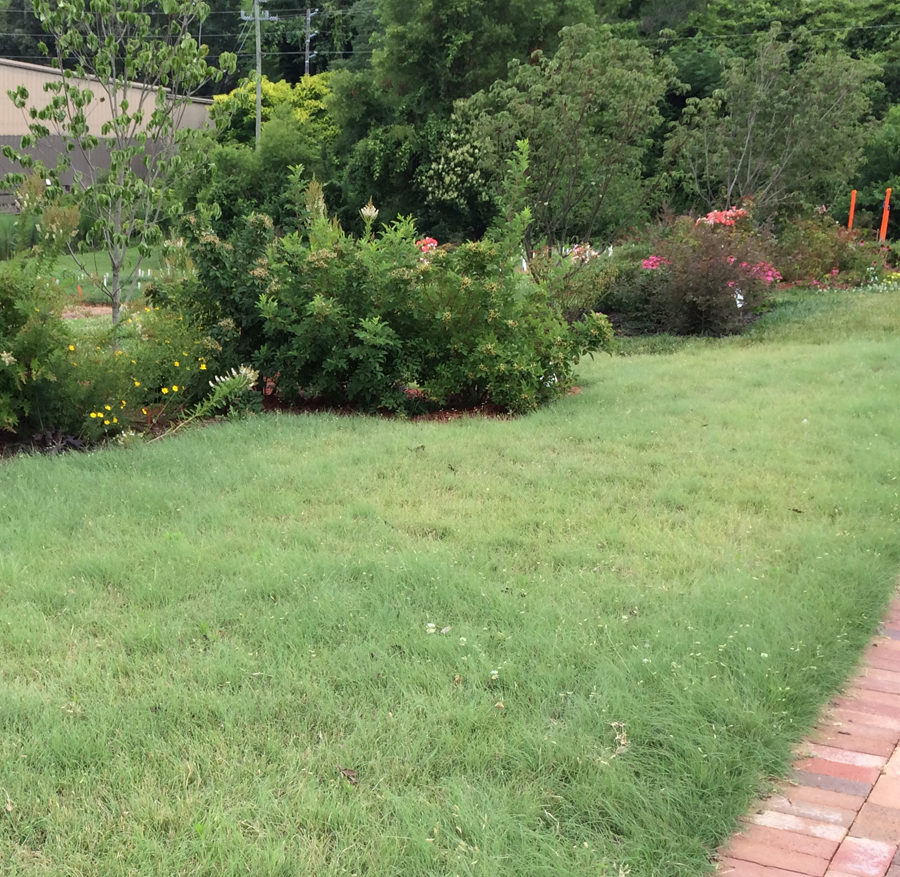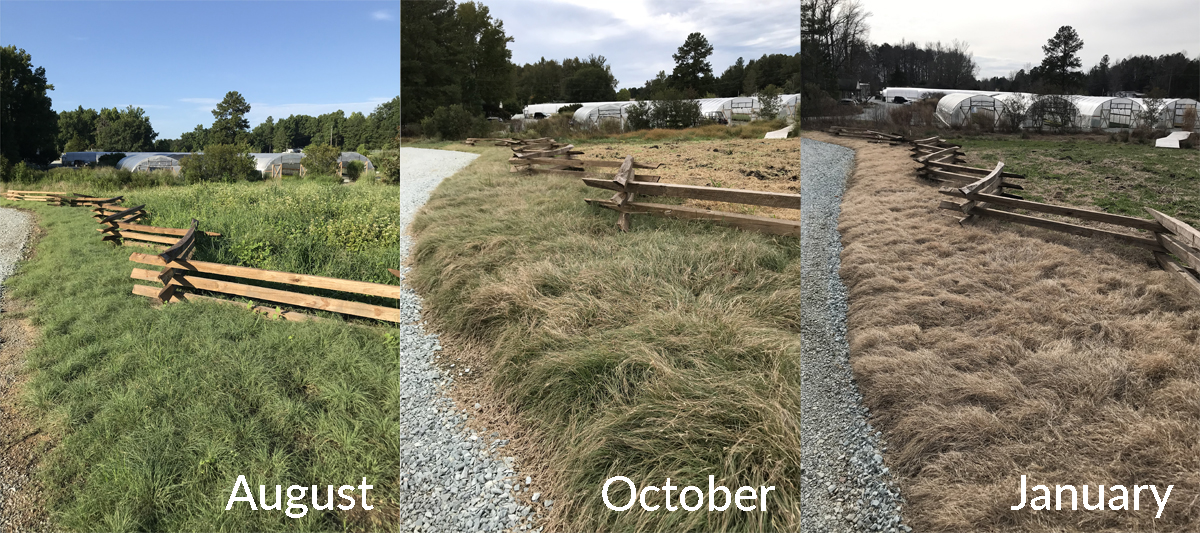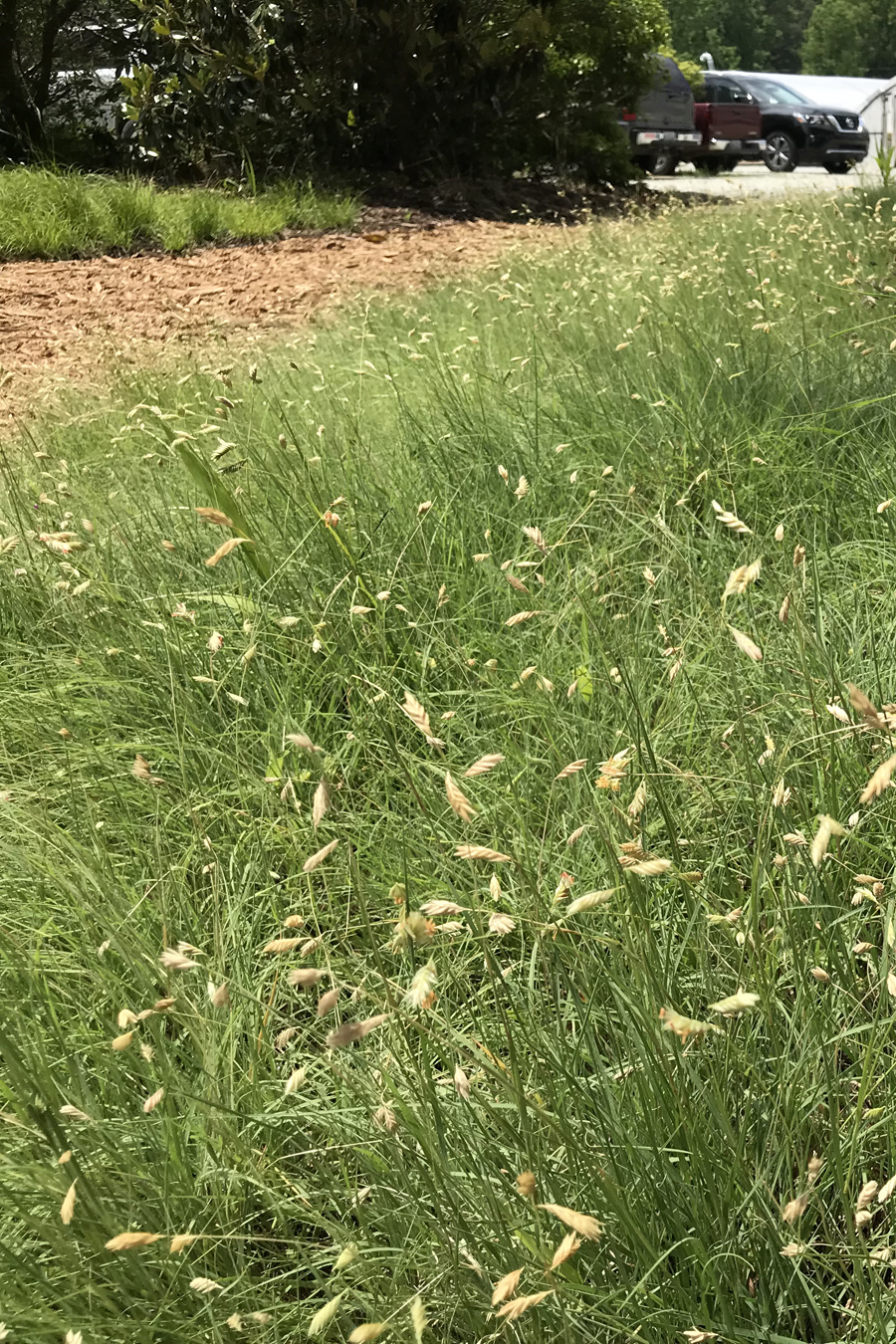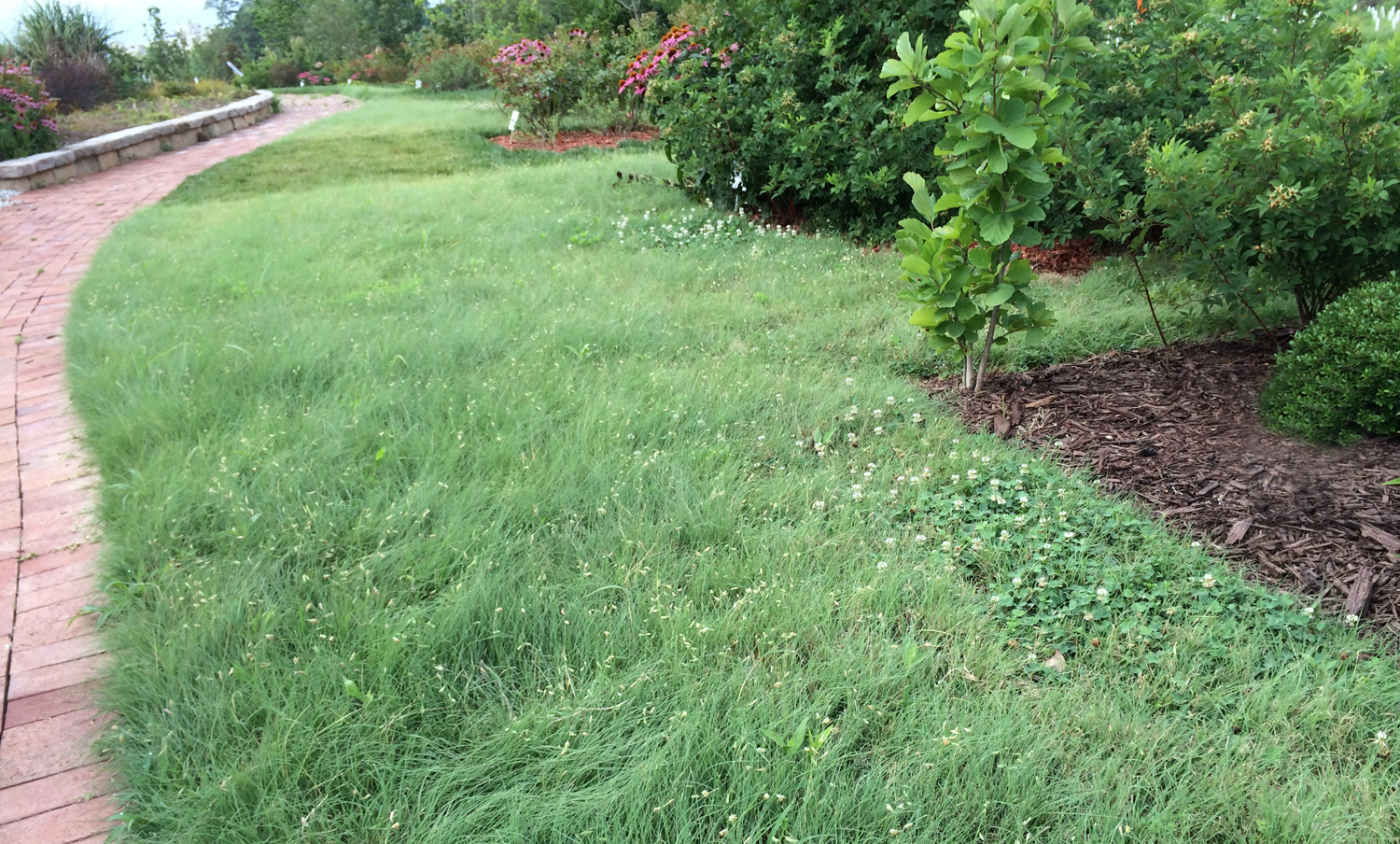Sedges for Lawn Alternatives
Our ongoing series, Sedges Make Sense, continues with Carex that work as alternatives to turf grass lawns. They offer a grasslike ground cover that is beautiful, adaptive, and easier to maintain.
Read Post
Would you like a lawn that doesn’t require fertilizer, pesticides, or frequent mowing? Our newest grass selection offers a low-resource alternative to traditional turf grass. Bouteloua dactyloides, commonly called Buffalo Grass, spreads quickly by rhizomes to form a dense carpet. Fine-textured, gray-green to blue-green foliage grows 10-12 inches long but curls and drapes over for a shorter appearance.
Bouteloua dactyloides is a warm-season grass that’s native to Manitoba and Saskatchewan, south through the Central Plains states of the U.S. and down into Mexico. It’s a dominant grass in shortgrass prairie and often forms the understory in taller prairies.
While not widely used in the Southeast, it has performed well for us in central NC. We’ve had a small patch of it in one of our gardens since 2010. In spring of 2018, we installed another planting on the front side of a fenced field. The images below show it at the end of that summer and into winter of 2019. While it forms a dense sod that is competitive, it still requires some weed management by hand pulling.

Cultural Needs
Buffalo Grass can be mowed several times per year or left in place for a natural look. If mowing, a minimum height of 2”-3” will help the grass compete with weeds. It may need periodic edging to keep it out of soft pathways or adjacent planting beds. Like warm-season turf grasses, it will turn dormant and brown mid-fall through mid-spring.
Buffalo Grass needs full sun but has low fertility and water requirements. It tolerates heat, drought, and alkaline soils. It is intolerant of heavy moisture and sandy soils. It only needs 1.5” of rain per month to stay green. During periods of prolonged drought, it may go dormant and turn brown. That strategy can help it survive under super-tough conditions. With lower needs for fertilizer, irrigation, and mowing, Buffalo Grass uses fewer resources than traditional, highly managed lawns.
According to the USDA’s plant fact sheet, Buffalo Grass plugs should be planted on 12 to 24-inch centers, depending on how quickly you want to get coverage. The plugs can spread within 8 to 12 weeks after planting.
Buffalo Background

The common name reflects this grass’s role as forage for buffalo (American bison) that once roamed the Great Plains. As a component of the shortgrass prairie, early settlers in the region used it to construct their sod houses. Then and now, it’s a larval host for green skipper butterflies. The specific epithet, dactyloides, means fingerlike, which refers to the inflorescences.
Buffalo Grass is dioecious, with male and female flowers on separate plants. The male flowers are on small, comb-like spikes that hover above the foliage. Female flowers cluster on short stems down in the leaves. We think the male flowers are part of its appeal, but they can be mowed for a look that’s more formal and closer to turf grass.
Ready to Try?
We’re growing Buffalo Grass in a 32-liner plug tray. It outgrows a liner quickly, so we produce this one on request. The average lead time is 10 weeks, but that may vary with the time of year and our production schedule. See our plant profile and contact our sales team for more information.
More Resources

Get Current Availability: Excel Download |PDF Download